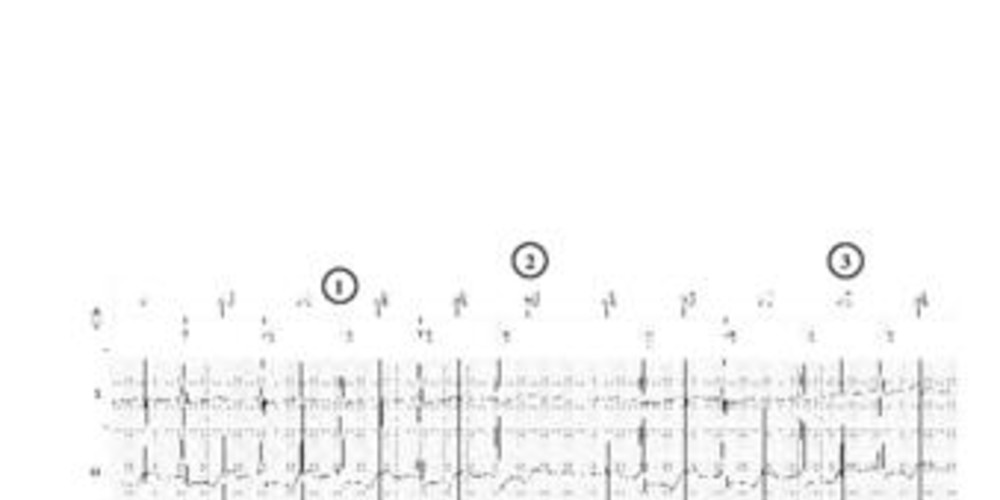Operation of the Vp suppression algorithm
Tracing
Manufacturer Biotronik
Device PM
Field Pacing Modes
N° 9
Patient
64-year-old man implanted with an Evia DR-T pacemaker for symptomatic sinus dysfunction (programmed Vp suppression algorithm); interrogation of the pacemaker and conducting of an exercise test (repeated leg flexions).

Graph and trace
Tracing 9a
- ADIR pacing mode; atrial rate response pacing with atrioventricular conduction and spontaneous QRS (AP-VS);
- blocked premature atrial contraction (classified as AS since falling outside the refractory periods);
- absence of switching on a single blocked atrial activity, no ventricular pacing; continuation of the ADIR mode.
Patient: 72-year-old man implanted with an Evia DR-T pacemaker for paroxysmal atrioventricular block (programmed Vp suppression algorithm); interrogation of the pacemaker.
Tracing 9b
- spontaneous atrial and ventricular rhythm;
- blocked P wave;
- second blocked P wave;
- third blocked P wave;
- switching to DDD mode.
Other articles that may be of interest to you







The AAI-DDD (Vp suppression) mode has been designed to allow pacing in ADI mode with permanent monitoring of atrioventricular conduction and switching to DDD mode when the pacemaker detects an alteration in conduction. There are 4 switching criteria corresponding to the different degrees of atrioventricular block (first-degree AV block, second-degree AV block, third-degree AV block and ventricular pause).
No EGM is automatically recorded as a result of switching from ADI mode to DDD mode, thereby limiting the possibilities of assessing the quality of the algorithm.